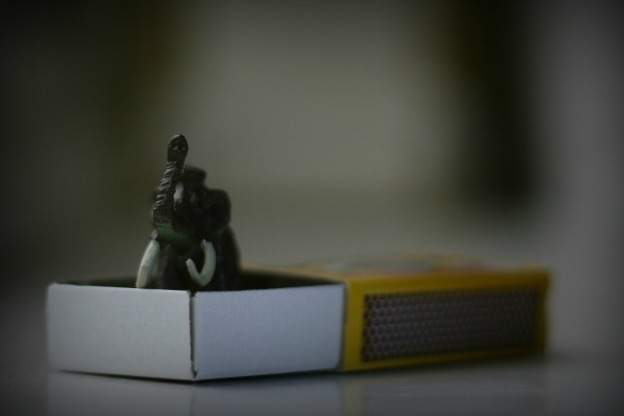
It seems like everything these days is getting smaller. Compact cars, nanotechnology, "microfiction," and tapas are all the rage...but miniaturization is nothing new! This hour, we'll be showcasing early religious music in some of its shortest forms. First, we'll hear bite-sized masses artfully composed to end as quickly as possible. Then, we'll hear one of these masses performed instrumentally in our featured release by the Venere Lute Quartet.
Madrigali spirituali
Let's start with "Vergine Bella," a sacred madrigal for five voices by Giovanni Pierluigi da Palestrina, performed instrumentally by the Venere Lute Quartet.
Palestrina's setting is of the first stanza of a poetic work by Petrarch celebrating the Blessed Virgin Mary. Before Palestrina, Guillaume Dufay and Cipriano de Rore also composed settings of this beautiful text.
"Madrigali spirituali" like Palestrina's were apparently all the rage in Italy in the late Renaissance, taking the emotionally expressive style of the madrigal and marrying it to texts and themes of the Catholic liturgy. We'll hear more from the Venere Lute Quartet later in the program, on our program's featured release entitled "Palestrina's Lute."
14th-century French Manuscripts
The idea of a "complete" musical setting of the Ordinary of the Mass did not take off until after Guillaume de Machaut's famous Messe de Nostre Dame in the 14th century. Contrary to Machaut's vision, the prevailing format of musical settings of the Mass during this time was pairs of short movements: Kyrie with Gloria, and Sanctus with Agnus Dei.
And settings of the Credo were a recent development that, thankfully, made it into several manuscripts from the period along with the paired settings. Let's listen to some of these brief mass sections.
Ockeghem's Missa Sine Nomine
Despite their rhythmic energy, many of the surviving French fourteenth-century mass settings contain similarly simple melodies. On the opposite end of this trend, however, stands Flemish composer Johannes Ockeghem.
Ockeghem is known for having created brain-teasing musical puzzles, and some of his masses could very well be the pinnacle of complex technical accomplishment for the 15th century. (What is often overlooked, however, is the level of expression with which Ockeghem imbued his music.)
His Missa sine nomine, or "mass without a name," derives none of its musical material from a preexisting source, as was common practice at the time. In addition, its form is out of the ordinary (no pun intended) in that it only sets the first three parts of the Ordinary of the Mass: the Kyrie, Gloria, and Credo. Finally, the subterranean range of the lowest voice part demands a very special contrabass singer. This singer may have even been Ockeghem himself, since he was noted by theorists of his day as having some serious pipes!
Missae Breves
And sometimes, size does matter!
Albrecht V, Duke of Bavaria, was a noted patron of the arts in the 16th century, and he also enjoyed a good hunt! So, his employee, Orlande de Lassus, composed several "missae breves," or short masses, to accommodate the Duke's hunting schedule since he didn't want to be held up by drawn-out polyphonic music.
Most of the short masses that Lassus composed favor a simple style that places the text first, far and above the rhythmic complication of previous generations of composers.
Featured: Intabulation and Palestrina's Lute
The notated instrumental traditions of the late Middle Ages and the Renaissance included a type of "arrangement" of vocal music called an intabulation. Primarily for either keyboard or a plucked-string instrument like a lute, these settings for one or several instruments expanded the repertoire available to instrumentalists.
More often than not, the intabulations were ornamented or completely re-envisioned in a style that suited the instruments performing them. "String quartet tributes" to pop music heard on the radio [or in elevators] these days could be considered modern intabulations.
Giovanni Pierluigi da Palestrina composed across a wide swath of formats, including the Missa Brevis, and the last Missa Brevis of this hour is from our featured recording entitled Palestrina's Lute. The Venere Lute Quartet provides their unique instrumental interpretation of this Renaissance master's polyphonic vocal music.
We have a little more time, so let's hear another piece from this recording. Here's the motet "Lauda Sion Salvatorem."
Break and Theme music
:30, Christopher Tye: Consort Music – In Nomine, The Spirit of Gambo, Musica Ficta 2014, Tr. 20 In nomine: Saye so (excerpt of 1:13)
:60, Christopher Tye: Consort Music – In Nomine, The Spirit of Gambo, Musica Ficta 2014, Tr. 12 In nomine: Crye (excerpt of 1:59)
:30, Christopher Tye: Consort Music – In Nomine, The Spirit of Gambo, Musica Ficta 2014, Tr. 8 In nomine: Hold fast (excerpt of 1:10)
Theme:Â Danse Royale, Ensemble Alcatraz, Elektra Nonesuch 79240-2 1992 B000005J0B, T.12: La Prime Estampie Royal
The writer for this edition of Harmonia is Benjamin Robinette.
Learn more about recent early music CDs on the Harmonia Early Music Podcast. You can subscribe on iTunes or at harmonia early music dot org.









